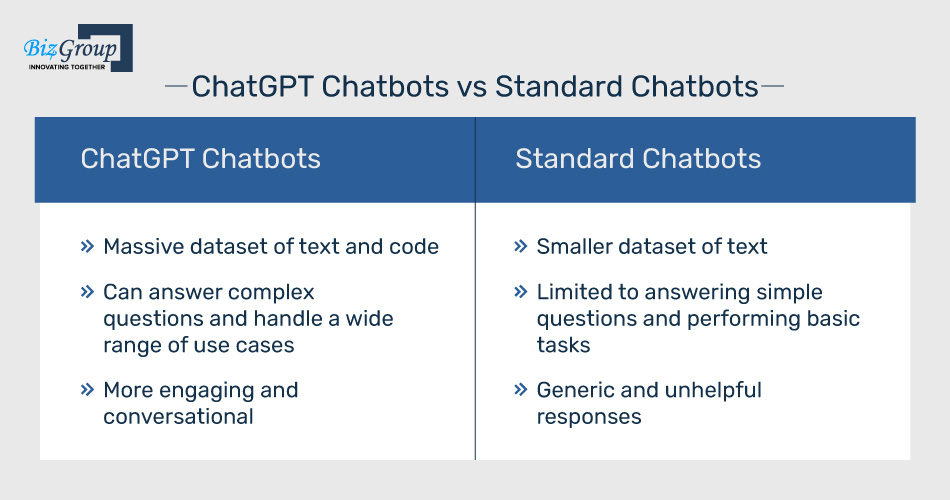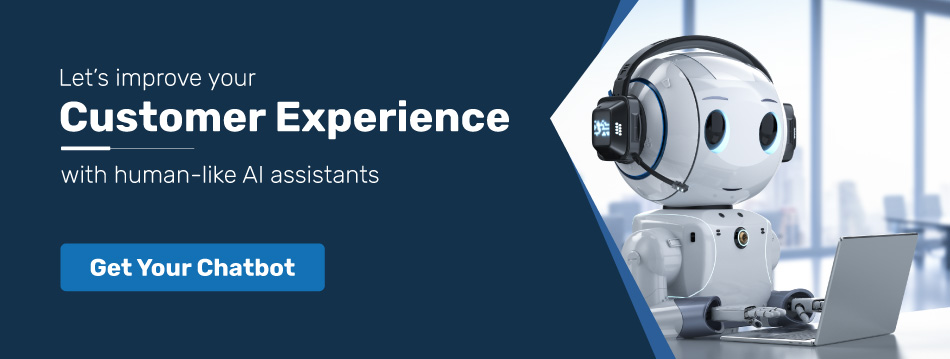How to Integrate ChatGPT for Customer Service
AI-powered chatbots have garnered a questionable reputation among both customers and CX leaders, largely due to their tendency to occasionally offer inaccurate and irrelevant responses, resulting in unsatisfactory customer experiences.
However, OpenAI has presented a game-changing answer in the field of customer service AI. Meet ChatGPT, an innovation that surpasses traditional chatbots. It is a cutting-edge natural language processing tool that promises to elevate your customer service to unprecedented levels.
ChatGPT integration in customer service processes can save millions of dollars for businesses. It can reduce the dependency on human agents and make customer service accessible 24*7.
We’ll talk about more “benefits of ChatGPT integration for customer service” and “how to do it” later in this article. First, let’s understand the conversational traits of ChatGPT and what makes it better than a standard AI chatbot.
ChatGPT for Customer Service
ChatGPT is based on the Generative Pretrained Transformer (GPT) model, which excels at comprehending and engaging with human language. The ChatGPT AI models are trained on human conversation data.
With GPT-4 being the newest and most sophisticated addition to the ChatGPT family it is optimized to handle multi-turn conversations seamlessly. Additionally, it proves valuable for single-turn tasks without conversational context. Access to this model is exclusively granted to users by OpenAI. With its versatility, it can generate text, compose emails, produce code, perform translations, model characters for video games, provide answers based on a set of documents, collaborate with user interfaces, and serve as a tutor across various subjects.
For businesses, AI software serves multiple purposes, catering to various needs. Developers utilize it for debugging their code, marketers leverage it to generate ad copy, and business owners use it for market research, among other applications.
In the world of customer support, ChatGPT plays a vital role by enabling companies to swiftly engage in natural and captivating conversations with their customers, eliminating the need for human agents in these chats.
ChatGPT Chatbots vs Standard Chatbots

ChatGPT-powered AI chatbots differ significantly from conventional chatbots in several crucial aspects:
-
ChatGPT chatbots are trained on an extensive dataset of text and code, enabling them to generate more comprehensive and informative responses. In contrast, regular chatbots are usually trained on smaller datasets, which limits their ability to provide accurate and helpful answers.
-
ChatGPT chatbots excel at handling complex questions and a wide range of use cases. On the other hand, traditional chatbots are typically limited to addressing simple queries and performing basic tasks.
-
ChatGPT chatbots offer a more engaging and conversational experience. Their ability to understand conversation context allows them to respond in a relevant and helpful manner. In contrast, conventional chatbots often deliver generic and less useful responses.
How to Integrate ChatGPT into Customer Service

Among all the AI development platforms out there, the ChatGPT platform is the best if you want to integrate ChatGPT into your customer service.
Here is how you can integrate using the platform:
1. Create an OpenAI account and Get the API Key
You will need to create an OpenAI account to access the ChatGPT-4 platform. Once you have created an OpenAI account, you will need to get an API key.
2. Create a Project and Upload Customer Data
Once you have an API key, you can create a project on the ChatGPT-4 platform. This is where the process of conversational AI chatbot development begins.
Here, the ChatGPT-4 chatbot will need to be trained on your customer data so that it can understand the context of customer inquiries. This data can include customer questions, feedback, and orders. You can upload your customer data to the ChatGPT-4 platform by clicking on the "Upload Data" button.
3. Create a ChatGPT-4 Chatbot Script
The chatbot script will define the chatbot's responses to common customer inquiries. The script should be clear, concise, and helpful. You can create the chatbot script by manually writing it or by using a chatbot script generator.
Make sure to keep the chatbot script clear and easy for customers to understand. Avoid using jargon or technical language.
4. Train the Chatbot
Once you have created the chatbot script, you need to train the chatbot on your customer data. This will allow the chatbot to learn the context of customer inquiries and how to respond to them in a way that is helpful and relevant.
Here, do note that the more data you train the chatbot on, the better it will be able to understand your customers and respond to their inquiries.
5. Test the chatbot
Once the chatbot is trained, you need to test it to make sure that it is working properly. This can be done by having customers interact with the chatbot and providing feedback.
As your business changes, you will need to update the chatbot script to reflect these changes. You should also test the chatbot regularly to make sure that it is working properly.
6. Connect the Chatbot to Your Backend and Create a Frontend for it
To integrate ChatGPT into your website's backend, you must create a server-side function that communicates with the API. This function will handle sending user input to ChatGPT and receiving the model's responses in return.
Next, you'll have to develop a front end for your chatbot. This involves designing the chat interface and implementing interactive elements using a combination of HTML, CSS, and JavaScript. However, if you don’t possess the technical knowledge to handle the backend and integrate ChatGPT, you should contact an AI development company . Experts like Biz4Group can implement chatbots the right way.
7. Deploy the Chatbot
Once the chatbot is tested and working properly, you can deploy it on your website or other channels. To integrate ChatGPT into your customer service effectively, make sure to consider the channels your customers frequently use to reach your business for help.

Benefits of ChatGPT in Customer Service
CX leaders are increasingly turning to AI automation technology, and ChatGPT is no exception, as it offers a primary solution for boosting efficiency and productivity.
By swiftly and effectively handling large volumes of repetitive customer inquiries, ChatGPT enables support teams to scale seamlessly, even during spikes in ticket volume. This alleviates the burden on human agents, allowing them to concentrate on more intricate and fulfilling tasks.
As scalability improves and team productivity soars, brands may find themselves reducing hiring needs and cutting costs without compromising customer experience. On the contrary, leveraging ChatGPT could lead to enhanced service experiences for customers.
Let's explore how ChatGPT improves CX.
Rejoice, the Wait is Over!
ChatGPT-integrated chatbots revolutionize support responses by swiftly addressing customer queries to eliminate the frustration of long queues. Customers can receive prompt assistance when they reach out for support, leading to a reduction in Time to First Response (TTFR). This achievement is a victory for CX leaders striving to meet their KPIs!
A Personal Touch
Equipped with sentiment detection and analysis, ChatGPT chatbots gain a profound understanding of customers' support queries, enabling personalized responses. Addressing each customer's concerns in a human-like and unique manner fosters more personal interaction, leaving customers feeling genuinely cared for. By training ChatGPT with customer-specific data, responses can be further tailored to cater to the individual needs of each customer.
Elevate Customer Satisfaction
Embrace the benefits of quick, efficient, and personalized support!
An AI trained on your support tickets can match or even surpass the Customer Satisfaction (CSAT) scores achieved by your best agents. However, to make this promising future a reality, essential steps must be taken to integrate ChatGPT seamlessly into the customer service ecosystem.

Let’s Build Your Chatbot
Incorporating an AI chatbot such as ChatGPT into your customer service functions demands a certain level of technical expertise in terms of AI modeling and training. This also requires familiarity with the website or IVR’s backend.
So, if you want to integrate ChatGPT into your customer service process, you should get in touch with our conversational AI experts that knows very well how to integrate with chatgpt. We, at Biz4Group , have built dozens of AI chatbots for customer service functions.
Feel free to contact our expert team for your chatbot requirements.
FAQs
1. How much does it cost to build and integrate ChatGPT-powered chatbots?
The cost to build a ChatGPT-powered chatbot for customer service starts at $3.5k. If you want to know more about how to integrate with chatgpt, Get in touch with Us.
2. What are large language models on which ChatGPT is built on?
Large language models (LLMs) are a type of artificial intelligence (AI) that can learn and understand a massive amount of text data. They can be used to generate text, translate languages, write different kinds of creative content, and answer your questions in an informative way.
3. What is Generative Pretrained Transformer?
Generative Pre-trained Transformer (GPT) is a collection of extensive language models created by OpenAI. These models undergo training on a vast dataset comprising text and code. It enables them to comprehend and provide responses to a diverse array of prompts and inquiries.
GPT models utilize the transformer architecture, a neural network design particularly effective for natural language processing (NLP) tasks. Transformers excel at understanding the relationships between words across long distances, resulting in the generation of text that is grammatically accurate and contextually meaningful.
 info@biz4group.com
info@biz4group.com 
















































